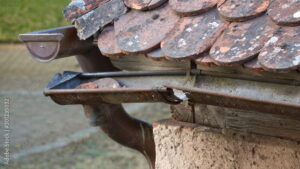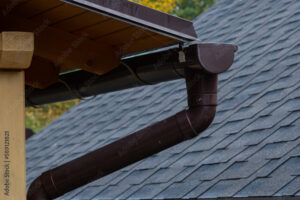
Roof Inspection Guide for Homeowners
Ensuring your home’s roof remains in top condition is vital for protecting your property from the elements and preventing costly damage in the long run. While professional inspections are recommended at least once a year, it’s also helpful for homeowners to know what to look for when it comes to potential problems with their roof. In this guide, we’ll specifically focus on DIY inspection tips for cleaning and maintaining gutters and downspouts.

Your home’s gutter system is designed to guide rainwater away from the roof and foundation of your house. When it’s clogged or damaged, water can back up, causing a multitude of issues. Here’s what to keep an eye out for:
Follow and subscribe to our YouTube channel for tons of Great information.
Website constructionconsumeradvocacyinstitute.com
Podcast anchor.fm/galloway
www.youtube.com/@ConstructionConsumerAdvocacy
Gutter Maintenance 
- Clogs: Look for leaves, twigs, or debris that might block the flow of water. These clogs can cause water to overflow and lead to water damage on your roof and siding.
- Leaves and Debris: Keep gutters clean to prevent blockages. You may consider installing gutter guards to minimize the collection of debris.

- Sagging Gutters: Over time, gutters can sag or pull away from the house. Check for signs of sagging or separation from the roofline.

- Seams and Joints: Inspect seams and joints for signs of wear or leakage. Seal any gaps with gutter caulk or consider seamless gutters as a long-term solution.
Downspout Considerations
- Blockages: Check the downspouts for obstructions that prevent water from flowing freely. This often occurs at elbow joints and can sometimes be cleared with a plumbers’ snake or pressure washer.
- Discharge Area: Ensure that the water exiting the downspout is directed away from your home’s foundation to prevent erosion and basement leaks. Consider adding downspout extenders if necessary.
- Damage: Look for dents, damage, or corrosion in your downspouts. These can restrict water flow and need to be repaired or replaced.
Addressing Common Issues
- Water Pooling: If you notice water pooling near the foundation, it may indicate poor drainage from the downspouts. Amend the ground slope or add extensions to reroute the water away from the house.
- Ice Dams: In cold climates, ice dams can form in the gutters or at the roof’s edge. While this is more of a winter issue, it’s important to have a properly insulated attic and adequate roof ventilation to prevent these formations.
- Signs of Erosion: Look for signs of erosion or damage to the landscape beneath the gutters. The presence of erosion can be a sign of gutter overflow or improper water diversion.
Safety First
Safety should be your top priority when inspecting your roof:
- Use a stable ladder and follow all safety precautions.
- Wear appropriate footwear to prevent slipping.
- Consider using a garden hose or pressure washer for cleaning gutters. Be mindful of the ladder’s stability when using these.
- Never work on the roof in wet, windy, or stormy conditions.
Conclusion
Regular maintenance and inspection of your roof, particularly the gutters and downspouts, can prevent serious and costly damage to your home. By following these DIY tips, you can ensure that your plumbing system is in good working order. However, for any repairs beyond basic maintenance, or if you’re uncomfortable working at heights, always seek the help of a professional. Remember, the goal is to keep your roof well-maintained and your home safe.
Follow and subscribe to our YouTube channel for tons of Great information.
Website constructionconsumeradvocacyinstitute.com
Podcast anchor.fm/galloway
